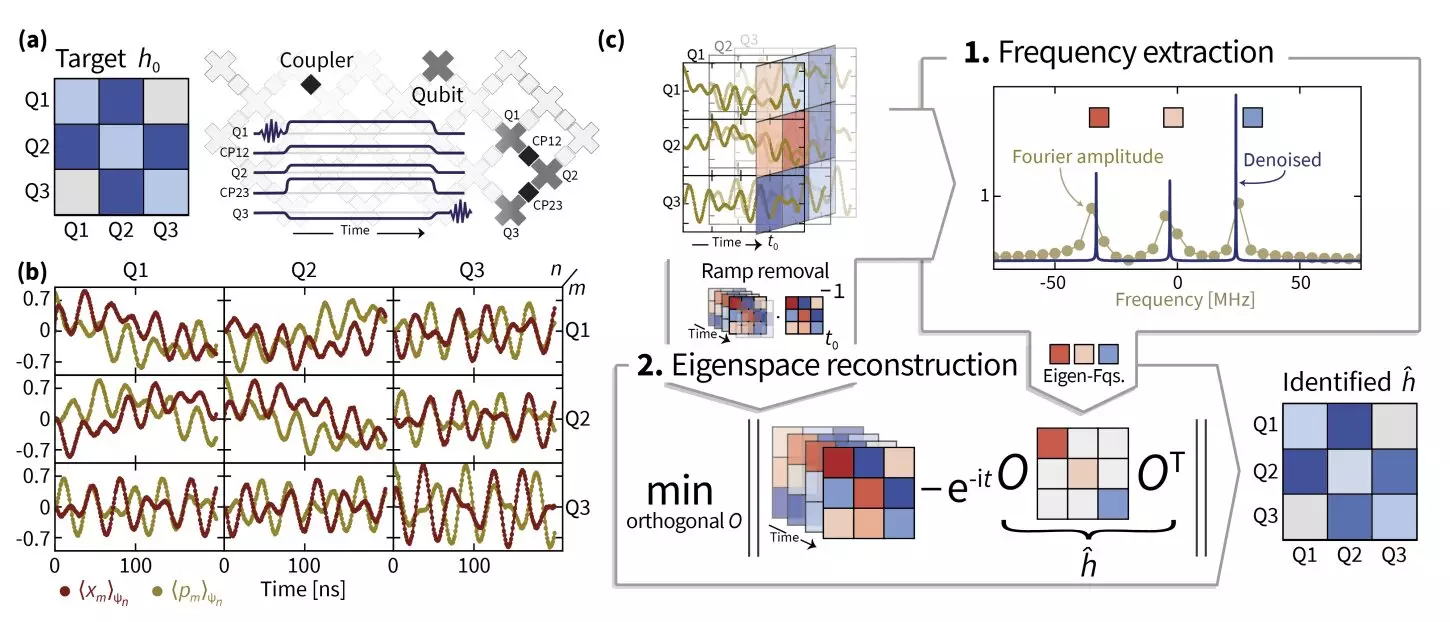The field of quantum computing is on the precipice of transformative advancements, one of the most significant being the development and understanding of Hamiltonian dynamics. A collaborative effort between researchers from Freie Universität Berlin, the University of Maryland, Google AI, and Abu Dhabi has contributed to broadening the horizons of quantum simulation, particularly concerning bosonic excitations in superconducting quantum systems. Their innovative approach, detailed in a paper on arXiv, outlines techniques that could potentially surpass the limitations of classical computational methods, significantly impacting quantum simulation precision.
Jens Eisert, the lead author of the research, recounted a pivotal moment while attending a conference in Brazil when he was contacted by colleagues from the Google AI team. They were facing complications in calibrating their Sycamore superconducting quantum chip due to inefficiencies in Hamiltonian learning methods. Initially, Eisert believed the solution to be straightforward, but as he delved deeper with his Ph.D. students, Ingo Roth and Dominik Hangleiter, they discovered the complexity of accurately recovering Hamiltonian frequencies from the available data. This unexpected challenge underscored the intricate nature of practical quantum system analyses and the need for specialized computational methods.
The researchers employed a combination of techniques to successfully estimate the Hamiltonian parameters of their quantum system. One of the critical methodologies they utilized was superresolution, which enhances eigenvalue estimations, thereby increasing the accuracy of Hamiltonian frequencies. Complementing this was a strategy known as manifold optimization, which applies specialized algorithms for complex problems involving variables laid out in curved spaces rather than conventional Euclidean dimensions. Eisert pointed out that understanding the imperfect nature of Hamiltonian switching processes—acknowledging their non-instantaneous and non-unitary attributes—was crucial for achieving reliable results.
One of the major breakthroughs presented in their study is the introduction of a new signal processing technique called TensorEsprit. This method combines the aforementioned superresolution with manifold optimization to robustly identify Hamiltonian parameters for up to 14 coupled superconducting qubits across two Sycamore processors. The process revealed its scalability and applicability, suggesting that it could support the characterization of significantly larger quantum processors. As researchers venture into these challenging realms, they recognize the inherent difficulties of Hamiltonian learning, which explains the scarcity of related publications in existing literature.
Looking ahead, Eisert and his team aim to extend their methodologies to interactive quantum systems and explore tensor network applications in quantum systems consisting of cold atoms—an area pioneered by physicist Immanuel Bloch. The insights gained from their ongoing studies are expected to deepen the understanding of Hamiltonians, which are often presumed to be known but rarely are in practical applications. This oversight can have tangible consequences, as the Hamiltonian frequently determines a system’s behavior; its precise knowledge is indispensable for accurate predictions and effective experimental designs.
The implications of this research extend far beyond theoretical considerations; understanding Hamiltonian dynamics could revolutionize the development of quantum technologies. The characterization of analog quantum simulators, enhanced by their findings, opens up new avenues for realizing high-precision quantum simulations. Eisert emphasized that such simulations allow researchers to recreate complex quantum systems and materials under highly controlled laboratory conditions, leading to potentially groundbreaking advancements in material science and quantum physics.
As quantum mechanics continues to challenge conventional notions of predictability and systems understanding, the journey embarked upon by this team underscores the importance of inquiry in an often-underappreciated realm. Questions surrounding the nature of Hamiltonians might seem elementary but are pivotal in shaping our predictive capabilities in quantum mechanics. As researchers unravel these complexities and refine their methodologies, the ultimate goal remains clear: to harness the power of quantum computing to surpass classical limitations and pave the way for innovative scientific discoveries. These contributions not only provide clarity on intricate theoretical questions but also promise to inform the next generation of quantum technology advancements.


Leave a Reply